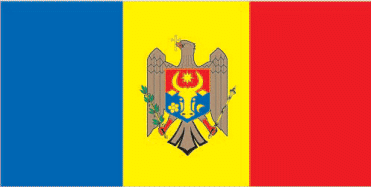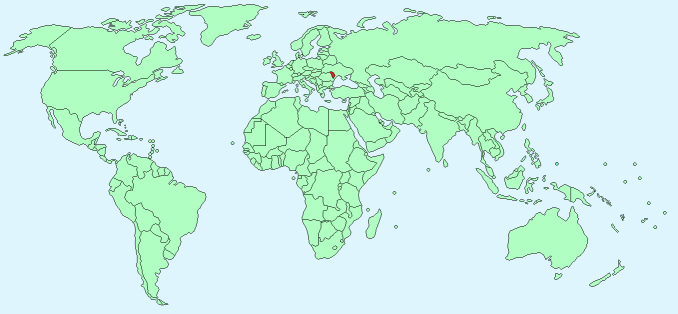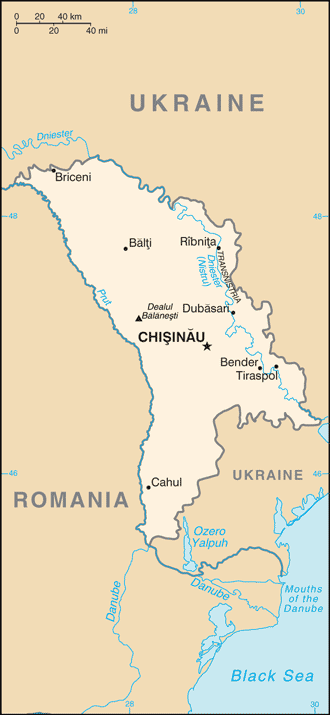Moldova


Continent – Europe
Region – Eastern Europe
Size – 33,851 km²
Geography – rolling steppes
Language – Moldovan 58.8%, Romanian 16.4%, Russian 16% Ukranian 3.1%, Gagauz 3.1%, other 2.6%
Religion – Orthodox 93.3%, Christian 2.2%, other 4.5%
Monetary Unit – Moldovan leu
Natural Resources – lignite, phosphorites, gypsum, limestone, arable land
Agriculture – vegetables, fruits, grapes, grain, sugar beets, sunflower seeds, tobacco; beef, milk; wine
Industry – sugar, vegetable oil, food processing, agricultural machinery; foundry equipment, refrigerators and freezers, washing machines; hosiery, shoes, textiles

Neighbouring Countries – Ukraine, Romania
Population – 2,091,719 (2014 estimate)
Population Growth Rate – 0.21%
Average Life Expectancy – 75.8
Capital City – Skopje (501,000)
Highest Mountain – Dealul Balanesti (430 m)
Longest River – Dniester (1,362 km)
Climate – Continental – cold winters – -4°C to 4°C and warm summers 20°C to 25°C
Yearly Rainfall – 50 cm (approx)
Plant Life – wild cherry, walnut, beech, feather grass, sheep fescue, thorn, bluegrass, silver linden, elm, sycamore, Norway maple, dogwood, oak, ivy
Animal Life – wild boar, wild pig, horses, badger, stone and pine marten, weasel, ermine, ferret, fox, squirrel, garden and forest dormouse, hamster, hare, lizard, snake, turtles
Bird Life – lark, jay, blackbird, song thrush, hawks, eagle owl, vulture, swan, pelican
Fish Life – bream, pike, carp, goldfish
Harvard Reference for this page:
Heather Y Wheeler. (2015). Moldova. Available: https://www.naturalhistoryonthenet.com/Facts_Figures/Country_Facts/moldova.htm. Last accessed Tuesday, July 19, 2016
Facts and Figures Pages
